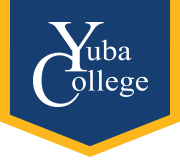Mathematics and Statistics Course SLOs
Click here for the Program SLOs
Math 1A – At the conclusion of the course, students will be able to:
- Evaluate limits and use them to find derivatives.
- Evaluate derivatives and interpret derivatives as rates of change and/or slopes of tangent lines.
- Solve applications that require differentiation such as applied optimization and related rates.
- Determine the behavior of a function from its derivatives.
- Evaluate integrals and interpret integrals as total changes and/or bounded areas.
- Compose simple proofs.
Math 1B – At the conclusion of the course, students will be able to:
- Calculate derivatives and integrals of algebraic and transcendental functions.
- Determine the convergence or divergence of sequences and series.
- Demonstrate the ability to apply the appropriate technique to integration and to the determination of convergence of sequences and series.
Math 1C – At the conclusion of the course, students will be able to:
- Compute partial derivatives, the gradient and extrema of functions.
- Evaluate double and triple integrals.
Math 2 – At the conclusion of the course, students will be able to:
- Classify DEs as linear, separable, homogeneous, exact, &c.
- Solve nth-order linear differential equations.
- Solve ordinary differential equations by applying an appropriate technique.
Math 3 – At the conclusion of the course, students will be able to:
- Solve a system of linear equations using matrix methods; Calculate eigenvalues and eigenvectors for a 3×3 matrix.
- Formulate transformations between n-dimensional vector spaces.
Math 9 – At the conclusion of the course, students will be able to:
- Graph a function using the first and second derivatives.
- Solve an application problem that involves the marginal cost, marginal profit, or marginal revenue.
- Solve an application problem that involves optimization.
- Find an equation of the tangent line to the graph of a function.
- Find the area bounded by the graphs of two functions. One of the functions may be f(x) = 0.
- Solve an application problem that involves integration.
Math 10 – At the conclusion of the course, students will be able to:
- Demonstrate an understanding of a variety of mathematical ideas and systems.
Math 15 – At the conclusion of the course, students will be able to:
- Demonstrate a depth of understanding of number systems.
- Demonstrate a depth of understanding of Polya’s method for problem solving.
Math 16 – At the conclusion of the course, students will be able to:
- Students will demonstrate an understanding of geometric ideas, basic probability and statistics, and methods of problem solving.
Math 20 – At the conclusion of the course, students will be able to:
- Solve an equation by applying a combination of methods
- Simplify a difference quotient
- Analyze a rational function
- Find the domain of a function
- Find the zeros of a polynomial
Math 21 – At the conclusion of the course, students will be able to:
- Graph and analyze the graph of a trigonometric function
- Solve a trigonometric equation
- Solve an application problem involving right triangles
- Prove an identity
- Find the value of a trigonometric function of an unknown angle given the value of a different trigonometric function of that angle.
Stat 1 – At the conclusion of the course, students will be able to:
- Calculate and interpret measures of center and measures of dispersion for given data.
- Find probabilities for applications involving normal random variables.
- Construct and interpret a confidence interval for a population mean or proportion.
- Formulate decisions about rejection or failures to reject hypotheses based on data/information provided.
Mathematics and Statistics Program SLOs
Computation 1: Solve equations and inequalities
Computation 2: Perform operations on mathematical objects (e.g. numbers, expressions, functions, matrices).
Computation 3: Graph equations, functions, and inequalities
Critical Thinking 1: Solve applied problems using mathematical or statistical methods
Critical Thinking 2: Prove identities and theorems
Critical Thinking 3: Apply definitions, notation and properties of mathematical concepts
